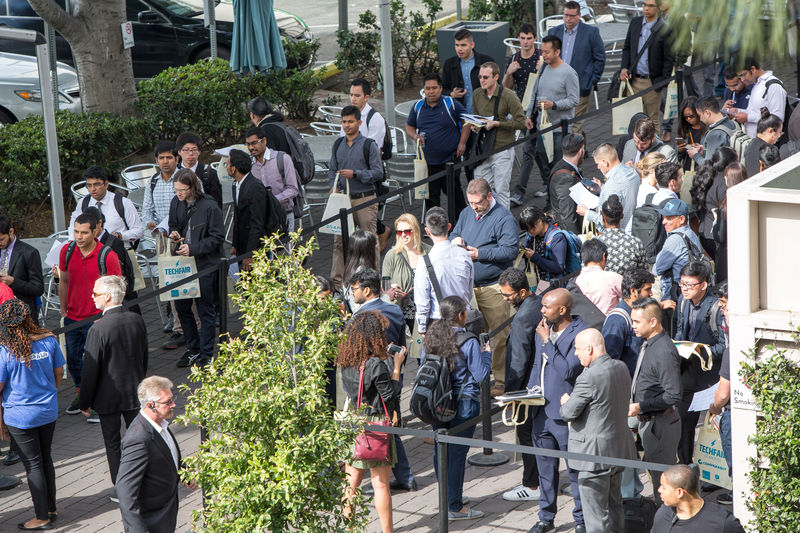By Lucia Mutikani
WASHINGTON (Reuters) - U.S. job openings fell in May, pulled down by declines in the construction and transportation industries, potentially flagging a slowdown in employment growth in the months ahead.
The Job Openings and Labor Turnover Survey, or JOLTS report from the Labor Department on Tuesday also showed a sharp drop in hiring in May, but layoffs remained low. After hitting an all-time high of 7.6 million in late 2018, job openings have been flat this year, suggesting some cooling in the labor market.
Still, the labor market remains strong. That is helping to underpin the economy, which is slowing amid trade tensions, tepid global growth and fading stimulus from last year's massive tax cuts and increased government spending.
"The JOLTS report looks consistent with the idea that the labor market is cooling somewhat but that it remains in solid shape," said Daniel Silver, an economist at JP Morgan in New York. "The JOLTS data don't show any obvious big reaction to the recent news on trade policy, which is consistent with the message from some other timelier labor market indicators."
Job openings, a measure of labor demand, slipped by 49,000 to a seasonally adjusted 7.3 million in May, the government said in the JOLTS report. The job openings rate dipped to 4.6% from 4.7% in April.
Vacancies in the construction industry dropped by 65,000 in May. Job openings in the transportation, warehousing, and utilities sector declined by 60,000, while unfilled positions in the real estate and rental and leasing industry fell 49,000.
Construction and transportation industries have been identified as among those struggling with worker shortages.
Declining job openings were also corroborated by a survey from the National Federation of Independent Business on Tuesday showing a decrease in the share of small business owners reporting vacancies they could not fill in June, even as about fifth cited the difficulty of finding qualified workers as their single most important problem.
FACTORIES RUNNING OUT OF WORKERS
But vacancies in manufacturing rose to a record 509,000 in May from 496,000 in April, suggesting that factories were running out of workers, despite a weakening in activity against the backdrop of an inventory overhang and the trade war between the United States and China.
"There's no way we can level the playing field and bring factories back to the USA because there is simply no one available to work in them and produce the goods that Americans want," said Chris Rupkey, chief economist at MUFG in New York
Hiring dropped by 266,000 to 5.7 million in May, with the biggest decrease in the professional and business services industry. The hiring rate fell to 3.8% from 4.0% in April. The drop in hiring explains the sharp step-down in job growth in May, with an increase of only 72,000 in nonfarm payrolls.
Job gains have since rebounded, with payrolls surging by 224,000 jobs in June, the government reported last Friday. The unemployment rate rose one-tenth of a percentage point to 3.7% as more people entered the labor market, a sign of confidence in their employment prospects.
The number of workers voluntarily quitting their jobs dipped to 3.4 million in May from 3.5 million in April. The quits rate was unchanged at 2.3% for the 12th straight month.
The quits rate is viewed by policymakers and economists as a measure of job market confidence. There was, however, an increase in the number of workers quitting their jobs in the state and local education sector.
"A tight labor market and plentiful private sector opportunities appear to be drawing teachers away from their stable, but often poorly paid, jobs," said Julia Pollak, an economist at ZipRecruiter.

Layoffs edged down in May, keeping the layoffs rate at 1.2% for a second straight month. There was, however, an increase in layoffs in the arts, entertainment, and recreation industry.